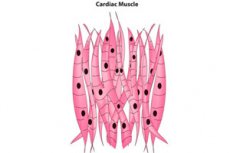New publications
Study examines heart cell regeneration in search of new treatments
Last reviewed: 02.07.2025

All iLive content is medically reviewed or fact checked to ensure as much factual accuracy as possible.
We have strict sourcing guidelines and only link to reputable media sites, academic research institutions and, whenever possible, medically peer reviewed studies. Note that the numbers in parentheses ([1], [2], etc.) are clickable links to these studies.
If you feel that any of our content is inaccurate, out-of-date, or otherwise questionable, please select it and press Ctrl + Enter.

When a patient experiences heart failure, one of the leading causes of death worldwide, they begin to lose healthy, functioning heart cells. Heart failure causes these once flexible cells to turn into fibrous cells that are no longer able to contract and relax. This hardening of the heart cells impairs their ability to effectively carry blood to the rest of the body. Because people cannot regenerate these heart cells, the patient faces a long road to recovery that includes preventative or symptomatic treatment.
However, some mammals are able to regenerate cardiac cells, although this typically occurs within a certain time frame immediately after birth. Based on this, Mahmood Salama Ahmed, PhD, and an international team of researchers completed a study to identify new therapeutic agents or existing therapeutic regimens previously approved by the U.S. Food and Drug Administration (FDA) for regenerating cardiac cells.
Their study, "Identification of FDA-approved drugs that induce cardiac regeneration in mammals," was published in the journal Nature Cardiovascular Research.
"This study is aimed at regenerative therapy, not symptomatic treatment," Ahmed added.
Ahmed, a professor of pharmaceutical sciences at the Jerry H. Hodge School of Pharmacy at Texas Tech University, worked on the study at UT Southwestern Medical Center. He said the current research builds on findings from a 2020 study by the lab of Hesham Sadek, MD, at UT Southwestern Medical Center.
In that study, the researchers demonstrated that mice could indeed regenerate heart cells by genetically deleting two transcription factors: Meis1 and Hoxb13. Armed with this information, Ahmed and his co-authors began their latest study in 2018 at the University of Texas Southwestern Medical Center. They began by targeting the transcription factors (Meis1 and Hoxb13) using paromomycin and neomycin, two antibiotics from the aminoglycoside class.
"We developed inhibitors to turn off the internal transcription and restore the regenerative capacity of cardiac cells," Ahmed added.
Ahmed said the structure of paromomycin and neomycin indicated their potential to bind to and inhibit the transcription factor Meis1. To understand how this binding might occur, the team first had to unravel the molecular mechanisms of paromomycin and neomycin and learn how they bind to the Meis1 and Hoxb13 genes.
"We started testing this in mice suffering from myocardial infarction or ischemia," Ahmed explained. "We found that both drugs (paromomycin and neomycin) acted synergistically to increase the ejection fraction (the percentage of blood leaving the heart with each contraction) so that the contractility of the ventricles (the chambers of the heart) was significantly improved. This increased cardiac output and reduced the fibrous scar that was forming in the heart."
The team collaborated with scientists at the University of Alabama at Birmingham to administer paromomycin and neomycin to pigs suffering from myocardial infarction. They found that pigs suffering from myocardial infarction had better contractility, ejection fraction, and overall improvement in cardiac output when given paromomycin and neomycin.
In future research, Ahmed is interested in combining the binding profiles of paromomycin and neomycin into one molecule rather than two. If successful, he said, the new molecule could avoid any unwanted or potentially unwanted effects associated with antibiotic resistance.
"We want to create new synthetic small molecules that target Meis1 and Hoxb13," Ahmed said. "We want to continue the study in pigs for toxicology studies. And then hopefully this will be a lead-in for human clinical trials.
"The good news is that we are using several FDA-approved drugs with established safety profiles and well-known side effects, so we can bypass some of the steps of getting approval to study a new drug. That's the beauty of drug repurposing: We can get to the clinic sooner to start saving lives."
